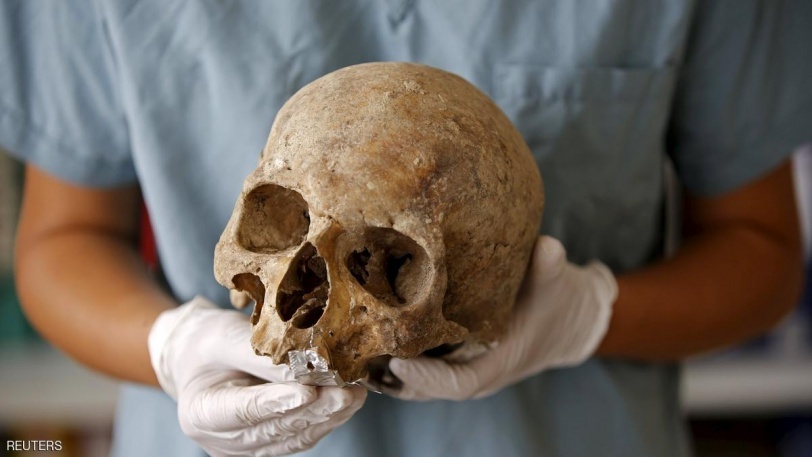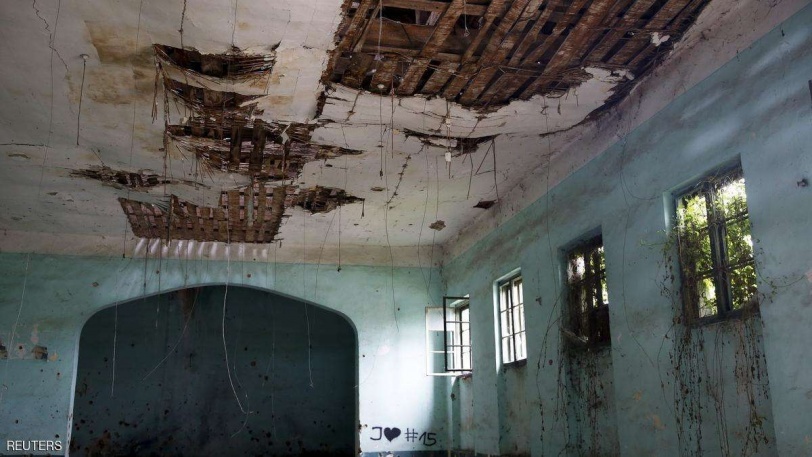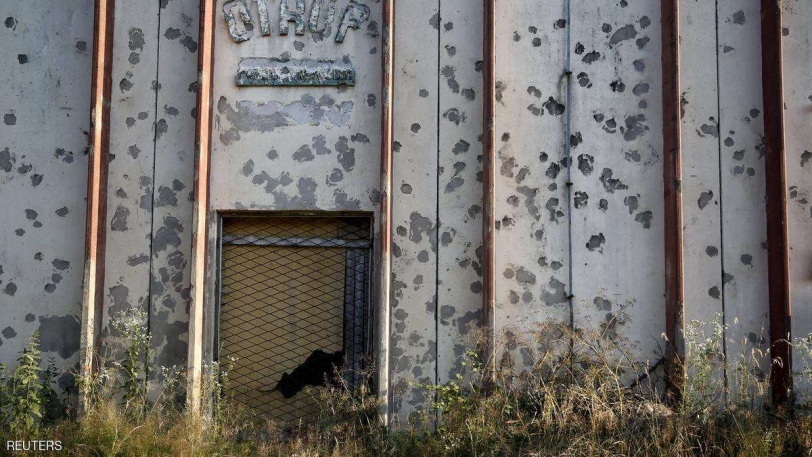
رام الله مكس – وكالات
لاتزال مذبحة سربرنيتشا تلقي بظلال كثيفة على دولة البوسنة، المنقسمة بين الصرب والمسلمين والكروات، حيث يشعر المسلمون بأن العالم لم يفعل شيئا لمنع وقوع المذبحة التي طوي فصل من فصولها، الخميس، بالحكم على زعيم صرب البوسنة السابق رادوفن كرادزيتش.
وقال قضاة تابعون للأمم المتحدة، في حكمهم بسجن كرادزيتش 40 عاما، إن الأخير كان يعتزم القضاء على الذكور من مسلمي البوسنة في بلدة سربرنيتشا، حيث مات 8 آلاف رجل وصبي وطفل مسلم، في “أسوأ جريمة حرب تشهدها أوروبا منذ الحرب العالمية الثانية”، كما اعتاد العالم على وصفها.
وأكد رئيس المحكمة القاضي أو-جون كوون أن حصار سراييفو، الذي دام 3 سنوات، وتعرضت خلاله المدينة للقصف ولنيران قناصة قوات صرب البوسنة ما كان ليحدث دون دعم كراديتش.
وتعود وقائع المذبحة إلى 11 يوليو 1995، وقرب نهاية الحرب في البوسنة التي استمرت من 1992 إلي 1995، حيث اجتاحت قوات صرب البوسنة منطقة سربرنيتشا في شرق الجمهورية اليوغوسلافية السابقة، وأعدمت 8 آلاف مسلم في الأيام التالية.
وشن جيش صرب البوسنة، بقيادة الجنرال راتكو ملاديتش، حملة للقتل استمرت أسبوعا بينما تنحت قوات الأمم المتحدة التي كانت تحمي البلدة جانبا. ولاحقت قوات صرب البوسنة من حاولوا الهرب وقتلتهم.
وبعد المذبحة ألقى الصرب جثث الضحايا في مقابر جماعية. وأخرجوا الجثث فيما بعد بالجرافات ونقلوها إلى قبور أصغر في محاولة لإخفاء الجريمة.
 An aerial view of the Memorial Center in Potocari near Srebrenica, Bosnia and Herzegovina June 20, 2015. Serbia warned that a resolution commemorating the 1995 Srebrenica massacre, which the United Nations Security Council is due to discuss on Tuesday, would only widen ethnic divides in neighbouring Bosnia. Picture taken on June 20. REUTERS/Dado Ruvic
An aerial view of the Memorial Center in Potocari near Srebrenica, Bosnia and Herzegovina June 20, 2015. Serbia warned that a resolution commemorating the 1995 Srebrenica massacre, which the United Nations Security Council is due to discuss on Tuesday, would only widen ethnic divides in neighbouring Bosnia. Picture taken on June 20. REUTERS/Dado Ruvic Senior Forensic Anthropologist Dragana Vucetic of the International Commission on Missing Persons (ICMP) works to attempt to identify the remains of a victim of the Srebrenica massacre, at the ICMP centre near Tuzla, Bosnia and Herzegovina, June 11, 2015. On Saturday, Bosnia marks the 20th anniversary of Europe’s worst mass killing since World War Two – the slaughter of some 8,000 Muslim men and boys by Bosnian Serb forces during five July days in 1995. Even now, the forests and farmland around Srebrenica are yielding bones; over 1,000 victims are missing, tossed into pits then dug up months later and scattered in smaller graves by Bosnian Serb forces trying to conceal the crime. Picture is taken June 11, 2015. REUTERS/Dado Ruvic
Senior Forensic Anthropologist Dragana Vucetic of the International Commission on Missing Persons (ICMP) works to attempt to identify the remains of a victim of the Srebrenica massacre, at the ICMP centre near Tuzla, Bosnia and Herzegovina, June 11, 2015. On Saturday, Bosnia marks the 20th anniversary of Europe’s worst mass killing since World War Two – the slaughter of some 8,000 Muslim men and boys by Bosnian Serb forces during five July days in 1995. Even now, the forests and farmland around Srebrenica are yielding bones; over 1,000 victims are missing, tossed into pits then dug up months later and scattered in smaller graves by Bosnian Serb forces trying to conceal the crime. Picture is taken June 11, 2015. REUTERS/Dado Ruvic An aerial view of the Memorial Center in Potocari near Srebrenica, Bosnia and Herzegovina, June 20, 2015. Serbia warned that a resolution commemorating the 1995 Srebrenica massacre, which the United Nations Security Council is due to discuss on Tuesday, would only widen ethnic divides in neighbouring Bosnia. Picture taken on June 20. REUTERS/Dado Ruvic
An aerial view of the Memorial Center in Potocari near Srebrenica, Bosnia and Herzegovina, June 20, 2015. Serbia warned that a resolution commemorating the 1995 Srebrenica massacre, which the United Nations Security Council is due to discuss on Tuesday, would only widen ethnic divides in neighbouring Bosnia. Picture taken on June 20. REUTERS/Dado Ruvic POTOCARI, BOSNIA AND HERZEGOVINA – JULY 11: Gravediggers collect shovels following a mass funeral attended by tens of thousands of mourners for 613 newly-identified victims of the 1995 Srebrenica massacre at the Potocari cemetery and memorial near Srebrenica on July 11, 2011 in Potocari, Bosnia and Herzegovina. At least 8,300 Bosnian Muslim men and boys who had sought safe heaven at the U.N.-protected enclave at Srebrenica were killed by members of the Bosnian Serb army under the leadership of General Ratko Mladic, who is currently facing charges of war crimes in The Hague, during the Bosnian war in 1995. A Dutch court recently found the Dutch government responsible for the deaths of three of the victims when Dutch U.N. peacekeepers handed the three men, who had been working on the Dutch base in Srebrenica, over to Serbian soldiers. (Photo by Sean Gallup/Getty Images)
POTOCARI, BOSNIA AND HERZEGOVINA – JULY 11: Gravediggers collect shovels following a mass funeral attended by tens of thousands of mourners for 613 newly-identified victims of the 1995 Srebrenica massacre at the Potocari cemetery and memorial near Srebrenica on July 11, 2011 in Potocari, Bosnia and Herzegovina. At least 8,300 Bosnian Muslim men and boys who had sought safe heaven at the U.N.-protected enclave at Srebrenica were killed by members of the Bosnian Serb army under the leadership of General Ratko Mladic, who is currently facing charges of war crimes in The Hague, during the Bosnian war in 1995. A Dutch court recently found the Dutch government responsible for the deaths of three of the victims when Dutch U.N. peacekeepers handed the three men, who had been working on the Dutch base in Srebrenica, over to Serbian soldiers. (Photo by Sean Gallup/Getty Images) A stage is seen inside an abandoned cultural centre in Pilica, Bosnia and Herzegovina June 24, 2015. Bullet holes riddle the walls at the site where around 700 people were killed, according to the Missing Persons Institute of Bosnia and Herzegovina. On Saturday, Bosnia marks the 20th anniversary of Europe’s worst mass killing since World War Two – the slaughter of some 8,000 Muslim men and boys by Bosnian Serb forces during five July days in 1995. Even now, the forests and farmland around Srebrenica are yielding bones; over 1,000 victims are missing, tossed into pits then dug up months later and scattered in smaller graves by Bosnian Serb forces trying to conceal the crime. REUTERS/Dado RuvicPICTURE 7 OF 12 FOR WIDER IMAGE STORY “SREBRENICA – SITES OF EXECUTION”SEARCH “RUVIC ABANDONED” FOR ALL PICTURES
A stage is seen inside an abandoned cultural centre in Pilica, Bosnia and Herzegovina June 24, 2015. Bullet holes riddle the walls at the site where around 700 people were killed, according to the Missing Persons Institute of Bosnia and Herzegovina. On Saturday, Bosnia marks the 20th anniversary of Europe’s worst mass killing since World War Two – the slaughter of some 8,000 Muslim men and boys by Bosnian Serb forces during five July days in 1995. Even now, the forests and farmland around Srebrenica are yielding bones; over 1,000 victims are missing, tossed into pits then dug up months later and scattered in smaller graves by Bosnian Serb forces trying to conceal the crime. REUTERS/Dado RuvicPICTURE 7 OF 12 FOR WIDER IMAGE STORY “SREBRENICA – SITES OF EXECUTION”SEARCH “RUVIC ABANDONED” FOR ALL PICTURES Plants grow outside the main residence of an abandoned agricultural cooperative in Kravica, Bosnia and Herzegovina July 1, 2015. Bullet holes riddle the walls at the site where between 1,000 and 1,500 people were killed, according to the Missing Persons Institute of Bosnia and Herzegovina. On Saturday, Bosnia marks the 20th anniversary of Europe’s worst mass killing since World War Two – the slaughter of some 8,000 Muslim men and boys by Bosnian Serb forces during five July days in 1995. Even now, the forests and farmland around Srebrenica are yielding bones; over 1,000 victims are missing, tossed into pits then dug up months later and scattered in smaller graves by Bosnian Serb forces trying to conceal the crime. REUTERS/Dado RuvicPICTURE 9 OF 12 FOR WIDER IMAGE STORY “SREBRENICA – SITES OF EXECUTION”SEARCH “RUVIC ABANDONED” FOR ALL PICTURES
Plants grow outside the main residence of an abandoned agricultural cooperative in Kravica, Bosnia and Herzegovina July 1, 2015. Bullet holes riddle the walls at the site where between 1,000 and 1,500 people were killed, according to the Missing Persons Institute of Bosnia and Herzegovina. On Saturday, Bosnia marks the 20th anniversary of Europe’s worst mass killing since World War Two – the slaughter of some 8,000 Muslim men and boys by Bosnian Serb forces during five July days in 1995. Even now, the forests and farmland around Srebrenica are yielding bones; over 1,000 victims are missing, tossed into pits then dug up months later and scattered in smaller graves by Bosnian Serb forces trying to conceal the crime. REUTERS/Dado RuvicPICTURE 9 OF 12 FOR WIDER IMAGE STORY “SREBRENICA – SITES OF EXECUTION”SEARCH “RUVIC ABANDONED” FOR ALL PICTURES








